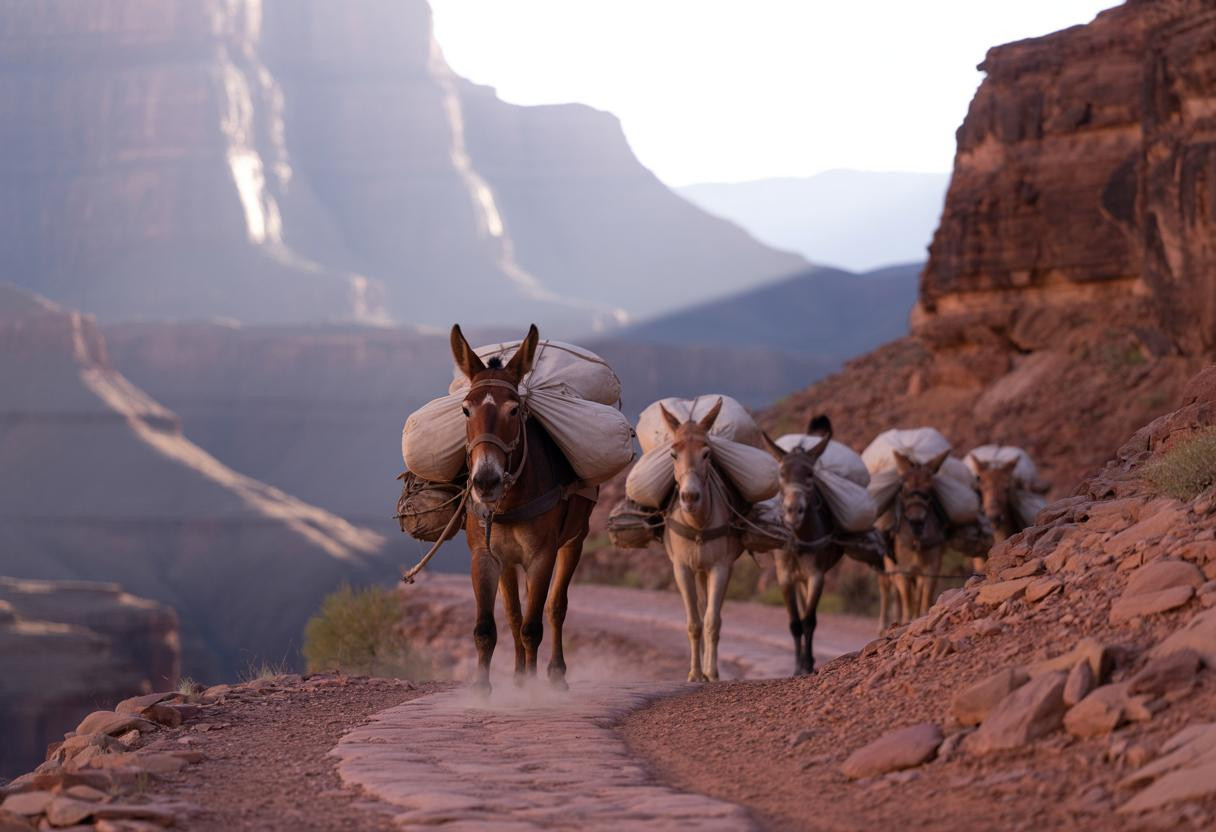Hidden deep in the Grand Canyon, one American village still receives mail the same way they did 90 years ago – by mule train. This isn’t a tourist attraction or historical reenactment; it’s the daily reality for 200 residents of Supai, Arizona, who depend on pack animals for everything from prescription medications to birthday cards.
What makes this system fascinating isn’t just its uniqueness, but how it reveals critical lessons about infrastructure resilience that other communities desperately need to understand.
The last mule mail route in America
Supai village sits 2,000 feet below the Grand Canyon rim, accessible only by an 8-mile hiking trail with treacherous switchbacks. No roads exist – making it impossible for traditional postal trucks to reach the community.
Every weekday at 8 a.m., mule wrangler Nate leads five pack animals loaded with mail up the canyon wall. The round trip takes six hours and covers 16 miles of rugged terrain. Each mule carries up to 200 pounds of mail and supplies, carefully balanced in USPS-approved crates.
“The mules know the trail better than most people,” says longtime wrangler Charlie Chamberlain. On the return trip, handlers often untether the animals and let them find their own way back to the village.
This system has operated continuously since the 1930s, making it the longest-running alternative postal delivery method in the United States.
Why this matters for isolated communities everywhere
Supai’s mule mail reveals something crucial about infrastructure resilience that applies far beyond the Grand Canyon. While other remote areas struggle with failing delivery systems, Supai’s method has proven remarkably reliable.
Cost efficiency beats high-tech solutions
Helicopter delivery to Supai costs significantly more than mule transport and gets canceled frequently due to canyon winds. The low-tech mule system operates in weather conditions that ground aircraft, demonstrating how traditional methods can outperform modern alternatives in specific environments.
This lesson applies to communities like those in Oregon facing a $6 billion road crisis as 241 towns could lose access by 2027. Sometimes the most sustainable solution isn’t the most technologically advanced one.
Cultural preservation creates economic value
Supai’s unique postal system generates significant tourism revenue. Visitors specifically hike to the village to send mail with the special “Mule Train” postmark, creating an economic ecosystem around what could be seen as an outdated delivery method.
The system employs tribal members as wranglers, postal workers, and guides, providing stable income in an otherwise isolated economy. Federal subsidies required to maintain this service cost less than many urban postal inefficiencies, yet deliver proportionally greater community value.
Lessons for modern infrastructure challenges
Supai’s success offers unexpected insights for communities grappling with delivery challenges and infrastructure failures.
Embrace terrain-specific solutions
Rather than forcing standard delivery methods into impossible situations, Supai adapted federal postal requirements to local geographic realities. This flexibility created a system that’s both compliant and practical.
Other isolated communities could benefit from similar adaptations. Instead of waiting for expensive technological fixes, they might find success in hybrid approaches that combine traditional methods with modern logistics.
Build redundancy through simplicity
Unlike complex delivery systems vulnerable to technological failures, Supai’s mule mail has few failure points. The animals, handlers, and trails require minimal maintenance compared to sophisticated alternatives.
While modern concerns like AI theft techniques draining 44% of crypto wallets in under 6 minutes highlight technology’s vulnerabilities, Supai’s analog system remains remarkably secure and reliable.
The surprising future of low-tech logistics
As climate change and infrastructure decay threaten traditional delivery methods, Supai’s mule mail demonstrates how community-specific solutions can thrive where one-size-fits-all approaches fail.
The village’s success challenges assumptions about progress and efficiency. Sometimes the most sustainable path forward looks remarkably like the past, adapted thoughtfully for present needs.
In an era of failed infrastructure promises and mounting delivery challenges, Supai’s 90-year-old mule mail system offers something rare: a proven model of resilient, community-centered logistics that actually works.
